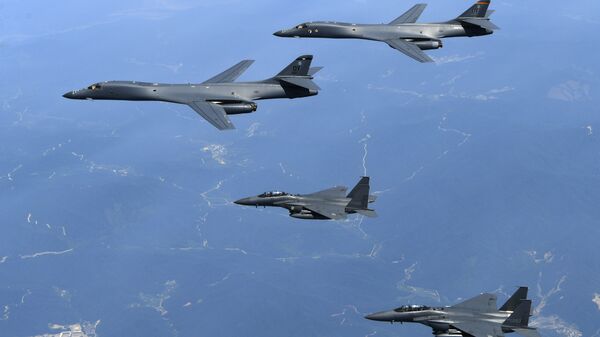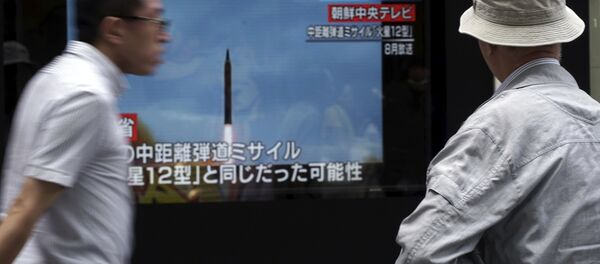A military official in Seoul said that although there is no sign of any impending “provocation” by Pyongyang, South Korea had detected “some movement from the North’s missile facilities and bases” and maintained ”the heightened reconnaissance and preparedness posture."
The United States has reportedly stepped up flights by its U-2S ultra-high altitude reconnaissance aircraft, while South Korea has increased the use of its own reconnaissance aircraft along the border with its northern neighbor.
"They even gave us the mathematical calculations that they believe prove that their missile can hit the west coast of the United States," Morozov told RIA Novosti.
"In the near future, they are going to carry out, as far as we understand, yet another launch of a missile, but this time with a longer range," the lawmaker noted, adding that the general mood in Pyongyang is "rather belligerent."
In the past few months, Pyongyang has launched a flurry of ballistic missiles, and in September it conducted its sixth nuclear test.
After North Korean leader Kim Jong-un threatened the US with the "highest-level" action last month, President Donald Trump, warned that America would meet this with “fire and fury.”
Shortly afterwards, North Korea’s foreign minister said that Pyongyang could detonate a hydrogen bomb over the Pacific Ocean.
Washington, for its part, is considering redeploying tactical nuclear weapons in South Korea, breaking away from the doctrine of denuclearizing the Korean Peninsula.
US Secretary of Defense James Mattis and his South Korean counterpart Song Young-moo “discussed the option” of putting nuclear weapons in the country during their meeting in Washington in September.




